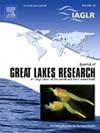Hydraulic characteristics of effective sea lamprey barriers
IF 2.4
3区 环境科学与生态学
Q3 ENVIRONMENTAL SCIENCES
引用次数: 0
Abstract
A network of 494 lowermost barriers on tributaries of the Laurentian Great Lakes prevents invasive sea lamprey (Petromyzon marinus) from accessing upstream spawning habitat and is critical to the success of the sea lamprey control program. The design goal of purpose-built barriers for sea lamprey control at low-head dams was to maintain a minimum vertical separation of 45 cm between the crest and downstream water level and a 15-cm overhanging lip. Due to physical site constraints limiting barrier design height and fluctuating stream water levels, many barriers cannot meet the design criteria. However, some barriers continue to block the passage of the sea lamprey even when the design criteria are not fulfilled. We conducted a physical modeling study of three sea lamprey barriers of varying historical efficacies to understand the hydraulic characteristics of effective barriers better. Results showed that time-averaged and horizontally averaged streamwise velocity, energy dissipation rate, and eddy length scale in the vertical direction strongly correlate with barrier efficacy. We combined the resulting variables into a dimensionless Barrier number that can be used to categorize barrier efficacy. Ineffective barriers generally had higher Barrier numbers than effective barriers. Our experimental investigation suggests that the fluid flow and turbulence conditions near the riverbed are not as crucial to barrier efficacy as those above the riverbed at 50 % of the crest height. Our work improves understanding of how existing barriers block sea lamprey movement, which could aid in the design of future sea lamprey barriers.
求助全文
约1分钟内获得全文
求助全文
来源期刊

Journal of Great Lakes Research
生物-海洋与淡水生物学
CiteScore
5.10
自引率
13.60%
发文量
178
审稿时长
6 months
期刊介绍:
Published six times per year, the Journal of Great Lakes Research is multidisciplinary in its coverage, publishing manuscripts on a wide range of theoretical and applied topics in the natural science fields of biology, chemistry, physics, geology, as well as social sciences of the large lakes of the world and their watersheds. Large lakes generally are considered as those lakes which have a mean surface area of >500 km2 (see Herdendorf, C.E. 1982. Large lakes of the world. J. Great Lakes Res. 8:379-412, for examples), although smaller lakes may be considered, especially if they are very deep. We also welcome contributions on saline lakes and research on estuarine waters where the results have application to large lakes.
 求助内容:
求助内容: 应助结果提醒方式:
应助结果提醒方式:


